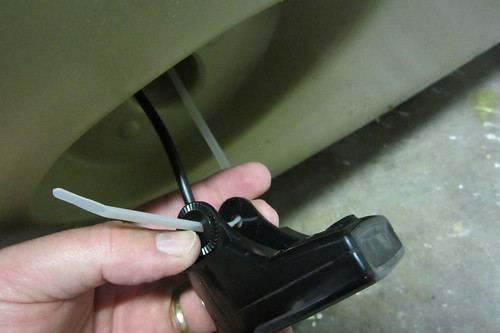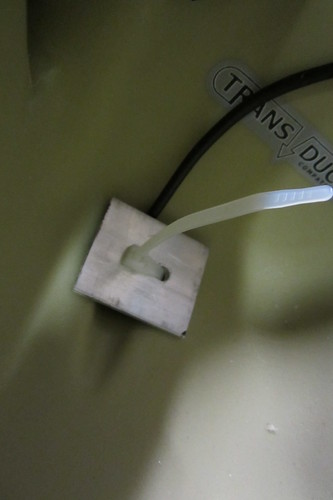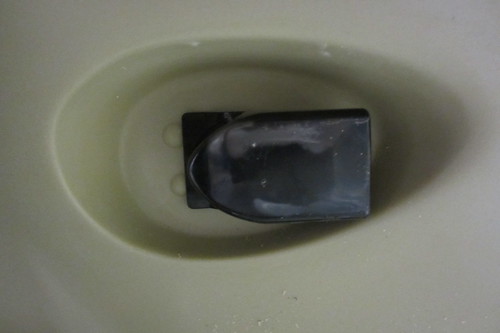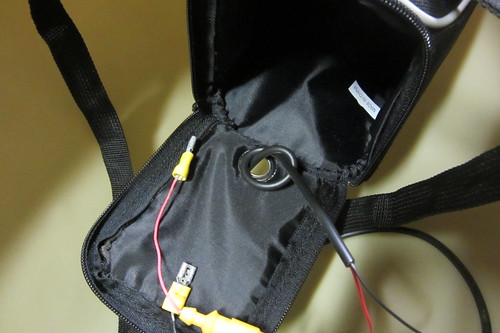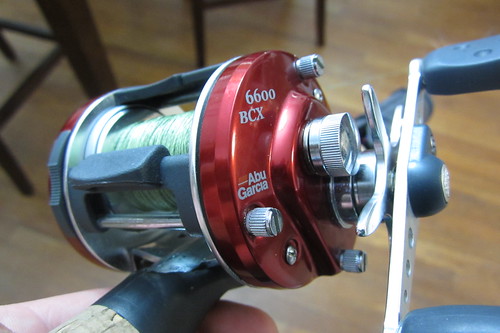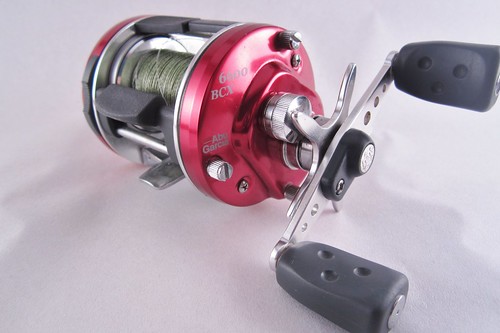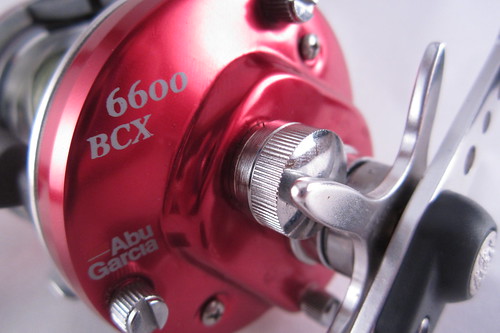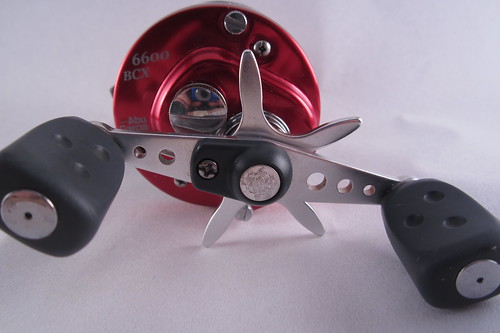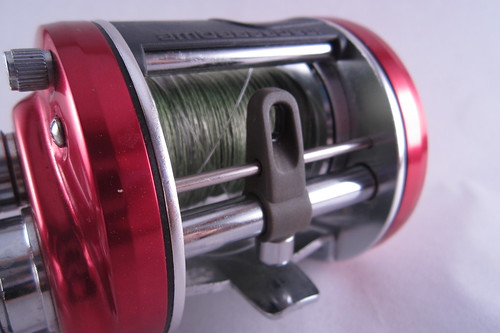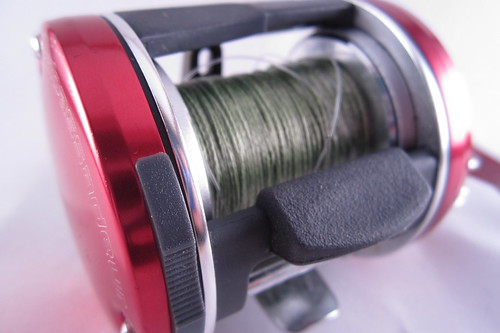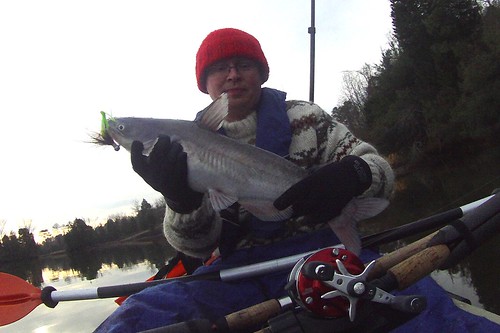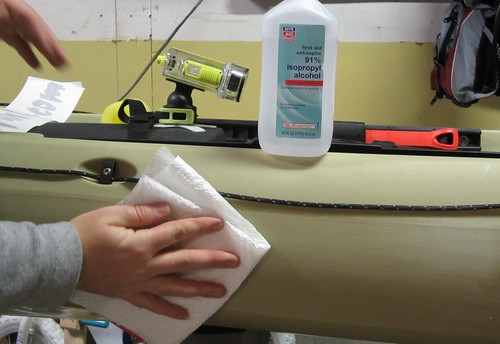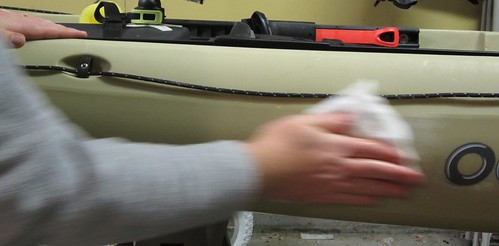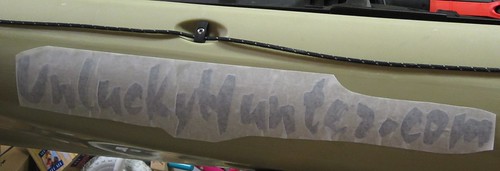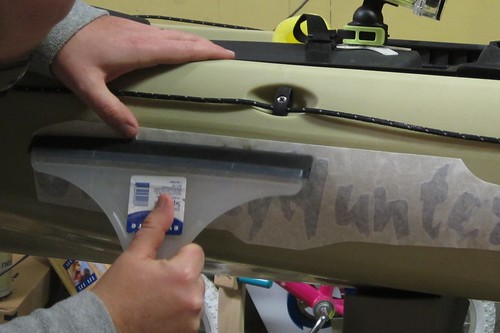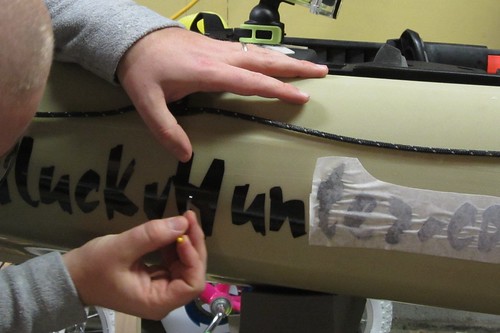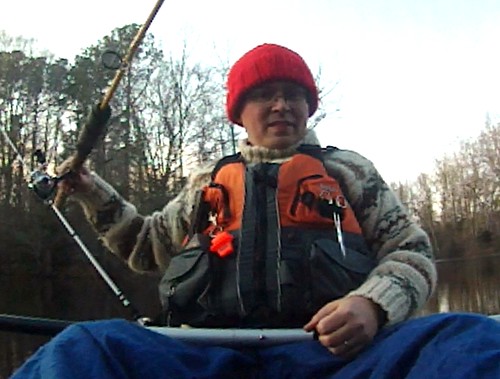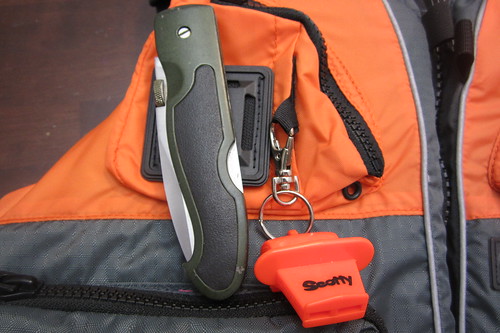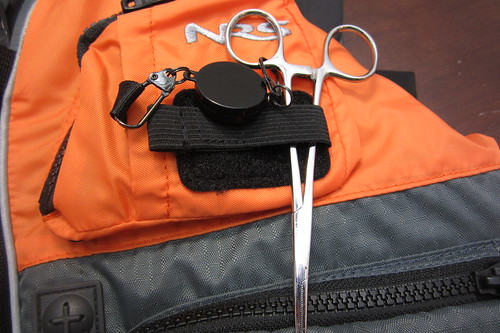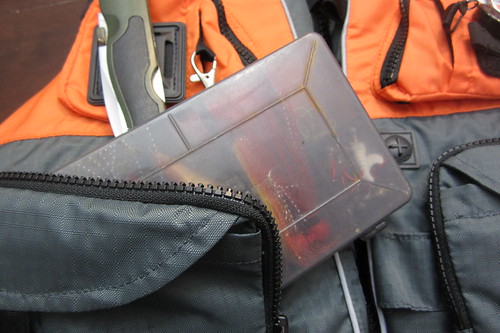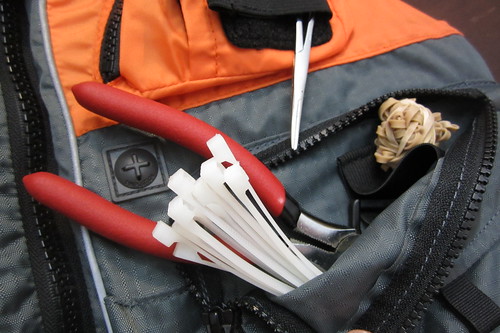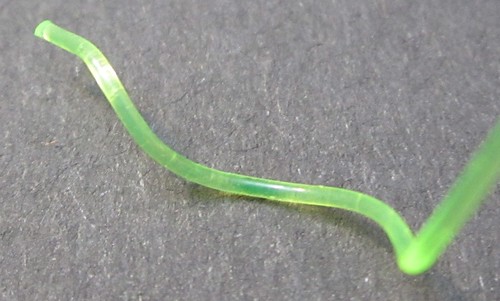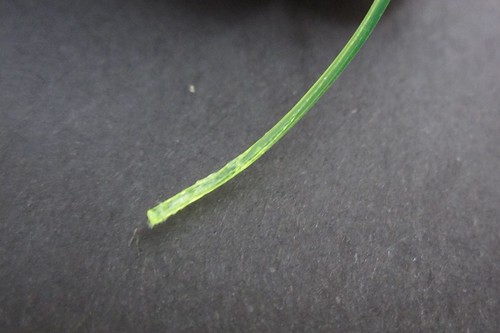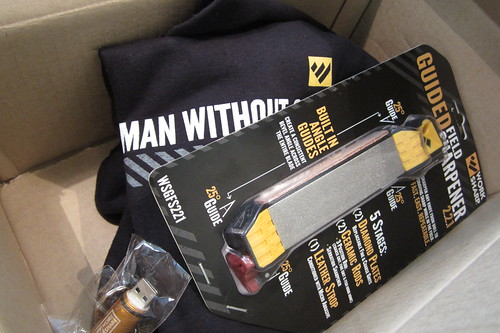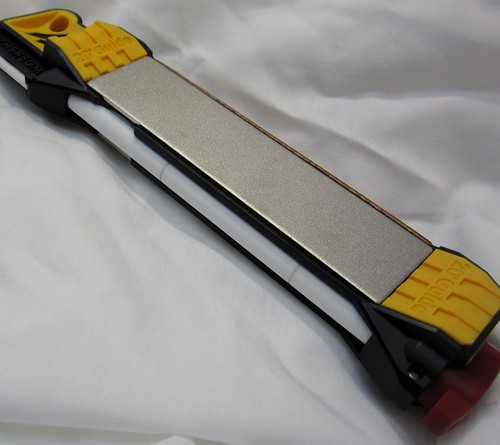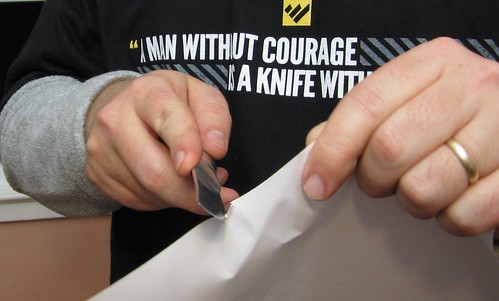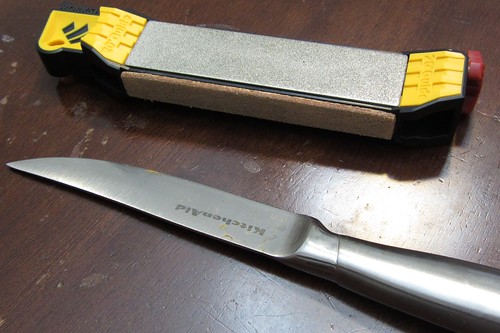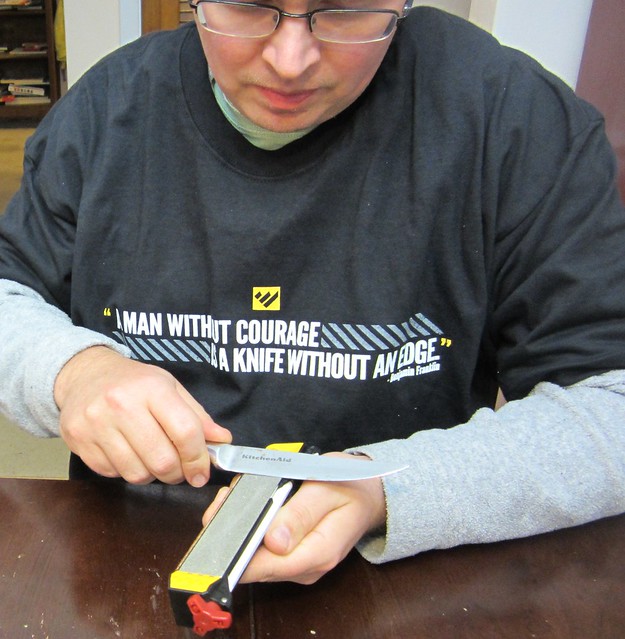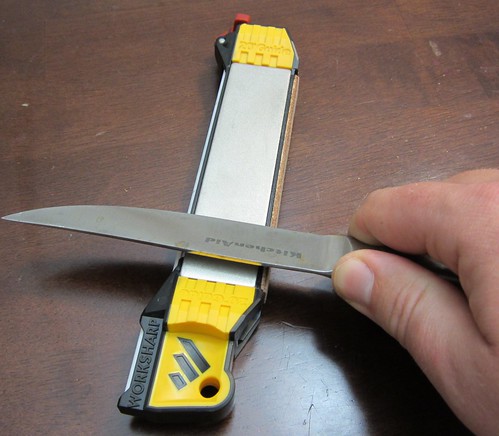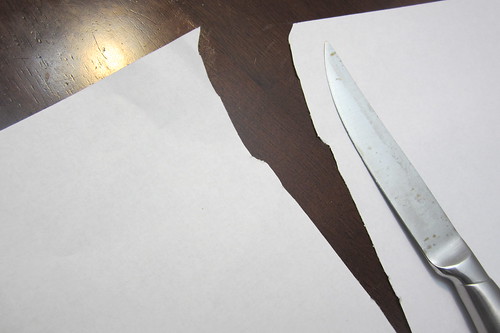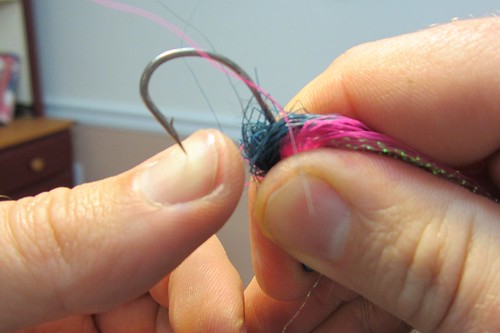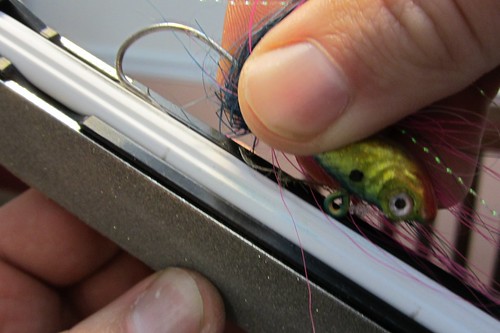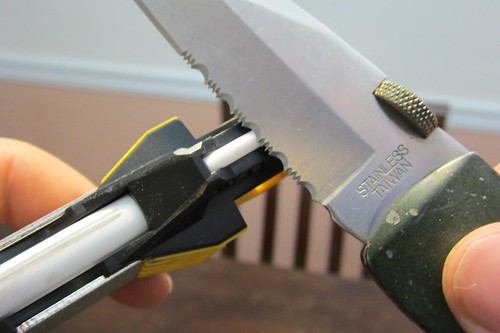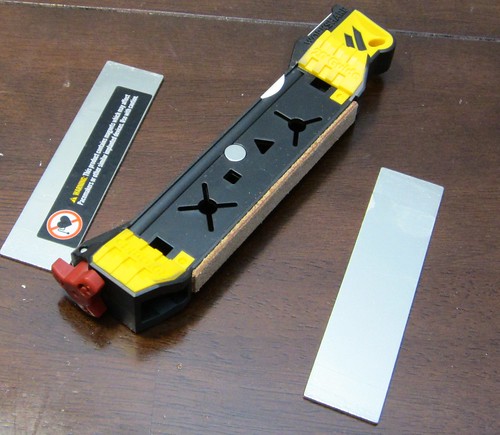If you are looking for the best pocket knife sharpener, check out this link out!
Work Sharp recently sent me their new
Guided Field Sharpener to review. Before I get into the review I want to stop and commend the promotion department at Work Sharp. Not only did they send me the sharpener, they sent me a USB stick, a big stack of stickers with fun quotes, and a nice t-shirt (which my wife promptly stole). Thanks Work Sharp!
Also, big thanks to
The Outdoor Blogging Network for setting up this review and many others!
On to the review.....
The Guided Field Sharpener is an all in one sharpener with an impressive list of functions. It has:
- Coarse and fine diamond plates
- Ceramic rod with fishhook sharpener
- Leather strop
- Serration sharpener
- Honing guides
- Broadhead wrench
Any time I see an all-in-one unit like this I am skeptical. It is my experience that multi-use products often do a lot of things adequately, but nothing great.
Let's find out if that is the case with this sharpener.
I started out with a knife that already had a working edge, but was not up to my standards. My standards? For me to consider a knife sharp it must be able to shave the hair on my arm without resistance.
After five minutes, about ten swipes on each side of the blade with the fine diamond plate, ceramic rod, and leather strop, it was sharp as a razor.
I question the usefulness of the leather strop. I could not tell a difference between using it and not using it.This could just be my technique.
A good start. Now for a real challenge.
Next, I pulled a kitchen knife out of a drawer. It was so dull it could not cut paper. The edge was chipped and flattened in some areas.
If the Guided Field Sharpener could get this knife sharp, it could get any knife sharp!
I started with the rough diamond plate and created a new edge. The built in guides made this very easy and the diamond plate cut deeply and quickly.
Lets stop and have a talk about safety.
In the picture above I am holding this sharpener incorrectly. If the knife was not so dull, I would have sliced my thumb open. I initially thought this sharpener was unsafe, until I read the directions. It is meant to be placed on a flat surface, like the picture below.
As an alternative, they suggest holding onto its tiny handle. I personally found this handle way too small for a good grip.
It took a while, and I never got the knife sharp enough to shave with, but it did get much sharper. Certainly sharp enough to clean a fish or gut a deer with.
Next, I tested the hook sharpener. I was most excited about this. A good hook sharpener is hard to find, and can save your day when fishing.
I test my hooks with the thumb nail test. If the point grabs and digs into my thumb nail, it is sharp. If it slides, then it is dull.
I ran into a few problems here.
First, the grooves in the ceramic rod were too large for my fishhook, and I was using a big hook. Luckily the "coarse" side of the ceramic rod had nice, smaller grooves that worked perfectly.
(By the way, Work Sharp advertises this coarse ceramic rod for heavy use items. Personally, I think this is bunk. All it is is a ceramic rod with small grooves running down it. I see no reason to sharpen your knife with this "coarse" ceramic rod, when you have a normal one at your disposal. It seems like they are just trying to add to their list of features)
Another problem I had was with the eye of my jig. As you can see in the picture below, the eye of the jig hit the rod, preventing the point of the hook from making contact with the rod. Normally I would just use the end of a sharpener, hanging the eye over the edge. However, the sharpening guides prevented me from doing this. I overcame this by twisting the hook a little, allowing the point to drop down.
I had a similar experience with the serration sharpener. Neither, the small serration rod nor the large ceramic rod fit the grooves of any of my knives. It would still sharpen, but not the entire serration edge.
You really need a tapered rod to properly sharpen serrations.
The unit is held together by powerful magnets and has a hollow area that could be used to carry matches or something else small. This also makes it easy to clean, which needs to be done after every few sharpenings or the pores in the plates and rods will get clogged.
It is fairly heavy, especially for something called a
Field Sharpener. If by "field" they mean "keep in your truck" then I agree. If, however, the mean "keep it in your pocket" I disagree. I protect every ounce in my pack and pockets when I am hunting. This is just too heavy.
After rereading the previous paragraph, I think I need to clarify. It does not weigh a ton, or even a pound. It is just heavy for what it is.
My only real complaint was with a manufacturing flaw in the fine diamond plate. It is hard to see in the picture below, but there is one grain that is raised above the others. This nicked the blade of my knife on every pass, denting the edge. This could cause serious damage to a knife edge, even to the point of making the knife unusable without a lot of work.
I quickly fixed the problem by rubbing the fine and course diamond edges together. This sanded down the bump perfectly.
Summary:
Pro's
The Guided Field Sharpener has everything you need to get a knife sharp. It works quickly and easily. A beginner who followed the directions would have no trouble getting a good edge. It is rugged enough to be used in the field without worry.
Con's
The hook sharpener and serration sharpener do not work as well as a dedicated sharpener would. The need of the leather strop is questionable. It is heavy compared to other pocket sharpeners. Be sure to check the diamond plates for flaws like mine. Hopefully, mine was an aberration.
Overall, I like this sharpener. It does a good job at simply sharpening knives. Much better than most sharpeners out there right now. You can find them for around $30.
It has earned a permanent place in my kayak where it will be used every time I go out.
I received the Work Smart Guided Field Sharpener for free in exchange for this review. This review is 100% my honest opinion. I received no compensation for it, other than the sharpener itself.
 .
.

